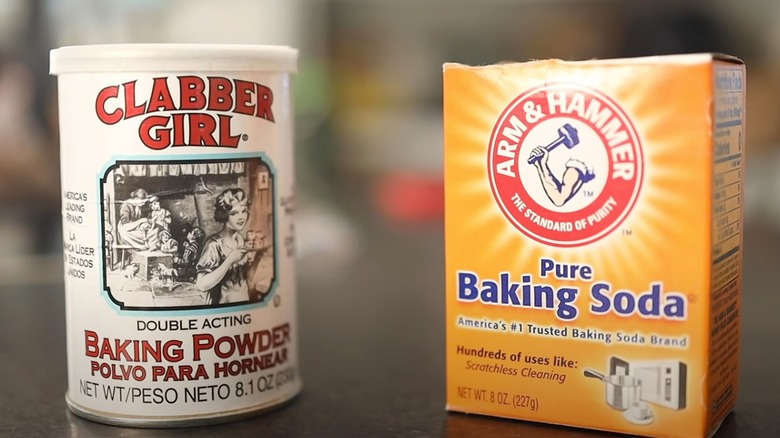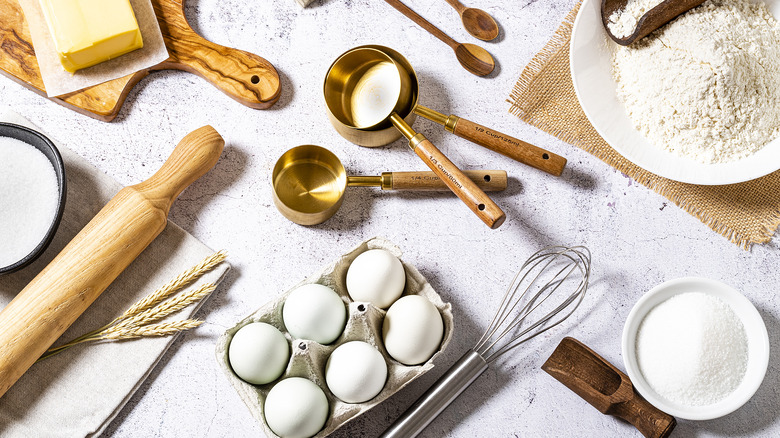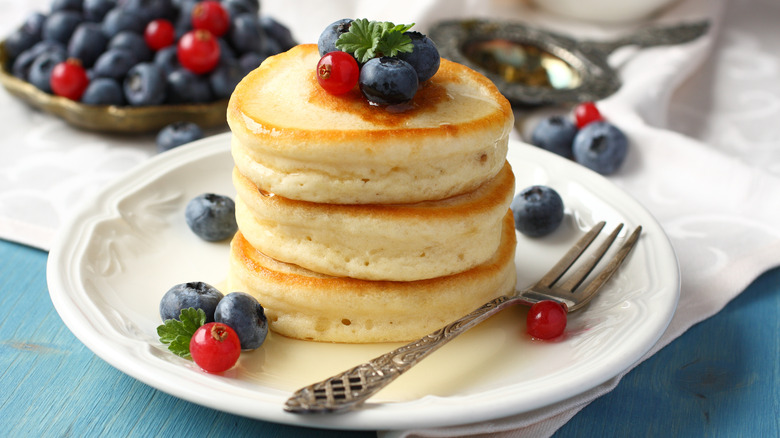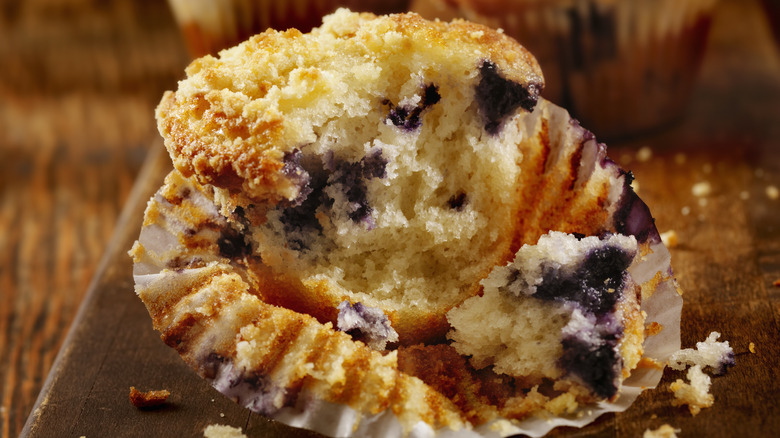How To Substitute Baking Soda With Baking Powder
Maybe you live far from the grocery store, grabbed the wrong item off the shelf, or have an intense late-night craving for banana bread. Whatever the reason, you need baking soda, and all you have is baking powder. The good news is that baking powder mostly consists of baking soda, so you can definitely use it as a substitute. However, you must use triple the amount of baking powder to replace baking soda. Keep in mind that baking powder sometimes includes some salt, so you may need to reduce the amount of salt you add to the recipe.
Baking soda is pure sodium bicarbonate. To act as a leavening agent, it needs to be activated by an acid. Baking powder already contains the acidic component in the form of cream of tartar. The necessary chemical reaction for rising starts when baking powder comes into contact with a liquid, so it usually also has cornstarch in the mix to prevent that reaction from happening in the container due to moisture in the air. It then undergoes a second chemical reaction when the batter or dough is heated in the oven.
In contrast, recipes that use only baking soda also call for another acidic ingredient like vinegar, lemon juice, yogurt, sour cream, or buttermilk. The baking soda reacts with the acid immediately, creating carbon dioxide bubbles that make your baked goods fluffy.
Some recipes call for both ingredients
Good recipe writers go through trial and error to find the best ingredients and processes for achieving their desired results. They test, and then test again. The measurements and ingredients are there for a reason, and you may find that some recipes actually call for both baking soda and baking powder.
Basically, when baking soda chemically reacts with acid, sodium acetate, water, and carbon dioxide are created. The acid is essentially transformed and neutralized in the reaction, which is what you need to lift your baked goods. However, you lose the tangy taste of whichever acidic component you added. This is totally fine in recipes where the acid is solely necessary to activate the baking soda, but not good when you want a bit of sour flavor like in buttermilk pancakes, sour cream coffee cake, or lemon muffins. That is why you also need baking powder. The built-in acid in the mix allows for some of the acid from that cultured dairy or citrus to be preserved for the sake of flavor.
Add cream of tartar to your baking soda
To make your own baking powder, combine two parts cream of tartar with one part baking soda. If you plan to store the mix in your cupboard, you will also need to incorporate one part cornstarch. Otherwise, just cream of tartar and baking soda will suffice. If you do not have cream of tartar on hand, you'll need to increase the amount of acid in the batter or dough. Consider adding a bit of lemon juice or vinegar to your wet ingredients. You'll need to reduce the amount of baking soda to about a third or a fourth of the amount of baking powder called for in the recipe.
Using a kitchen scale to measure by weight can make either substitution more accurate. With the right adjustments, baking soda and baking powder can be used interchangeably. However, once you start altering a recipe, the chances of producing a somewhat different end product are high. If you follow the advice of bakers, you'll probably still end up with something delicious to snack on, but there's always a risk that the recipe will fall flat ... literally.
Desserts that use only baking powder
If you are very detail-oriented and have a specific result in mind, it might be best to pivot to a recipe that is specifically designed to use only baking soda as the leavener. Alternatively, you can skip the conundrum entirely and opt for leavening-free desserts that will satisfy any sweet tooth, such as lemon bars, chocolate pudding, or meringue cookies.
If something fluffy and floury is more your style, many cupcake and cake recipes use just baking powder, like for this orange walnut bundt cake. If you're in need of a quick sugar fix, you might consider a microwavable mug cake, where just a few simple ingredients are combined and then zapped in the microwave to cook. Who says it needs to be breakfast or brunch to enjoy a short stack or a breakfast pastry? Pancakes, muffins, and scones are sweet treats that often feature recipes skipping baking soda in favor of baking powder.




